Lake Erie Fishing History: From Tribes to Anglers
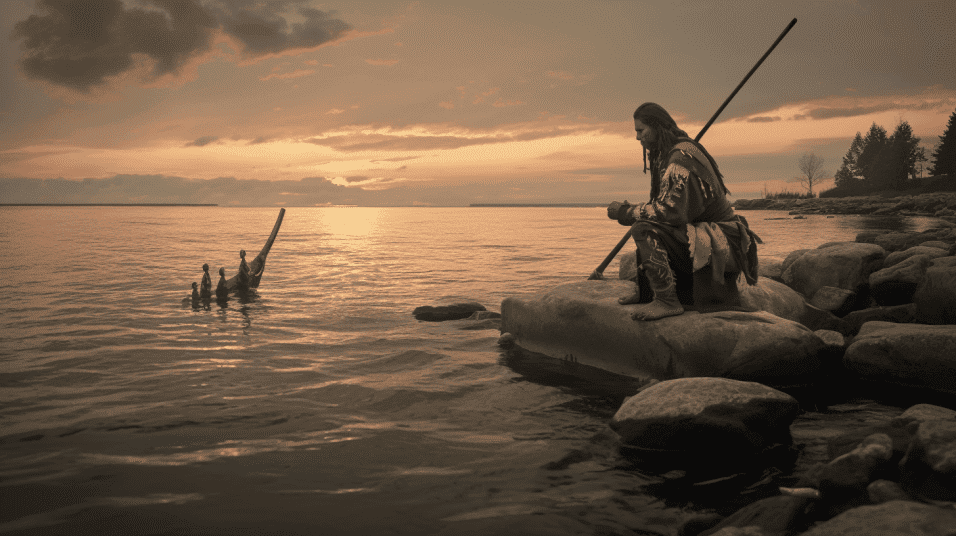
The Enduring Legacy of Lake Erie’s Rich Fishing History
Table of Contents
Lake Erie Fishing History
Lake Erie is one of the five Great Lakes in North America, situated on the border between Canada and the United States. It spans across 9,910 square miles and has a maximum depth of 210 feet. Lake Erie has been a significant source of food and livelihood for several Native American tribes who have resided on its shores for thousands of years.
In modern times, it is considered to be one of the best sportfishing destinations in North America. Lake Erie’s rich fishing history dates back thousands of years when Native American tribes first started fishing in its waters.
The lake provided them with an abundance of fish, which was critical to their survival. The tribes utilized various techniques such as spearfishing, weirs, traps, and nets to catch fish such as catfish, sturgeon, lake trout, walleye, whitefish and yellow perch.
With the arrival of European settlers in the region during the 18th century came commercial fishing. The first commercial fishery on Lake Erie began around 1820 when it was discovered that fish catches could be salted and stored for transportation to other regions.
Initially dominated by small-scale operations using basic equipment like gill nets and pound nets; by mid-1800s larger companies emerged with steam-powered vessels capable of hauling bigger catches. Despite being a valuable resource for many years Lake Erie’s fisheries were largely unregulated until the early part of twentieth century when overfishing began to impact stocks dramatically.
Additionally pollution caused by increased industrialization negatively impacted biodiversity throughout much of this period. Today sportfishing is one of Lake Erie’s most popular pastimes; attracting anglers from all over the world looking to catch species such as yellow perch, walleye and white bass; all abundant due to successful conservation programs sponsored by state agencies like Ohio Department Natural Resources (ODNR) in partnership with non-profits like Lake Erie Waterkeeper Inc., Western Reserve Land Conservancy, and others.
Importance of fishing to Native Tribes and modern anglers
Fishing has been an essential part of the culture and survival of Native Tribes that have inhabited the freshwater coasts of Lake Erie for thousands of years. These tribes relied heavily on fishing as a food source and a primary means of trade.
The abundance of fish in Lake Erie made it possible for tribes like the Wyandot, Shawnee, Ottawa, and Potawatomi to establish permanent settlements along its shores and build thriving communities. The importance of fishing to these Native American tribes is so ingrained in their culture that it is still celebrated today through annual fish festivals and ceremonies.
These events are a reminder not only of the historical importance but also reflect the spiritual significance that fishing holds for these tribes. Fishing provided sustenance, but it was also a way to connect with nature and honor the Great Lakes’ sacred waters.
Today, modern anglers continue to recognize the importance of fishing in Lake Erie. While recreational fishing may not be necessary for survival as it was for Native Tribes, it is still an integral part of many people’s lives.
Anglers come from all over to fish in Lake Erie’s waters, seeking out popular species like yellow perch, walleye, white bass, bluegill sunfish, rainbow trout among others. The thrill of catching a big walleye or reeling in a school-sized perch is something that many anglers cherish and consider an important activity for relaxation or family bonding time.
In addition to providing recreation opportunities and promoting tourism through sportfishing tournaments held around Lake Erie’s shores throughout the year (e.g., Bassmaster Elite Series), angling provides financial benefits too. The sportfishing industry has grown significantly over time with local businesses offering various services such as boat rentals or accommodations making significant profits during peak seasons which helps boost local economies while conserving resources by supporting sustainable fisheries management practices that ensure both present-day angling enjoyment and future generations’ access to healthy fisheries.
The Early Days: Native Tribes and Fishing
Before the arrival of Europeans, Lake Erie’s fishing industry was dominated by Native American Tribes. These tribes relied on the lake’s abundance of fish as a crucial food source, and their techniques were passed down from generation to generation. The Native Americans mainly relied on spears and nets for catching fish, but they also used hooks made out of bones or shells.
The tribes caught a wide variety of species, including lake sturgeon, muskellunge, catfish, pike and various types of bass. These fish were caught in different seasons using specific techniques; in springtime when fish were spawning in rivers and streams along the shoreline, Native Americans would wade into the water with torches at night to attract them.
During other times of year they would use fish weirs made from rocks or brushwood to catch larger quantities. The Native American Tribes considered fishing a sacred activity that required respect for spiritual significance and balance within nature.
They practiced sustainable fishing methods because they understood that overfishing could lead to depletion of certain species’ populations which would ultimately affect their own survival. Despite being crucial for their survival throughout history, it is important to note that Native American tribes today still face legal battles for their right to maintain traditional fishing practices.
The role of Native Tribes in Lake Erie fishing
is deeply rooted in history. For thousands of years, Native American tribes relied on fish as a primary food source and developed sophisticated techniques for catching them.
Lakes were important sources of fish for the tribes living in the area around Lake Erie, which provided plentiful catches and easy access to fresh water. The fishing traditions of Native American tribes were passed down from generation to generation, and different tribes had their own unique techniques for catching fish.
The Seneca tribe was known for using weirs constructed from stones placed in a river to trap fish upstream, while the Erie tribe used large woven nets called gillnets to catch lake trout and whitefish. Other tribes used spears or traps made from sticks and bark.
Native Americans also had a spiritual connection with fishing, viewing it as a sacred activity that required respect for the creatures they caught. Many ceremonies involved the giving of thanks to the spirits of the lake or river for providing abundant catches.
In addition to providing a food source, fishing played an important cultural role in Native American communities around Lake Erie. Tribes would often hold fishing contests or gatherings where stories could be shared and new friendships formed.
Fishing also played an important part in early trade between European settlers and Native Americans, with fish being traded for European goods such as cloth, metal tools, or firearms. Overall, Native American tribes played an integral role in shaping Lake Erie’s rich fishing history by developing innovative techniques and fostering spiritual connections with fishery resources that continue to this day.
Species caught by Native Tribes
Native tribes around Lake Erie had a plethora of fish species to choose from, making fishing a major part of their daily lives. One of the most commonly caught fish species was whitefish.
Whitefish were plentiful in the waters surrounding Lake Erie and were often caught in large numbers. The fish were commonly caught with nets and then smoked or dried for later consumption.
Whitefish became such an important part of Native American diets that they often held elaborate fishing ceremonies to honor the catch. Lake Erie was also home to a variety of trout species that Native tribes frequently fished for as well.
One such species was the lake trout, which could grow up to three feet in length. The lake trout was a major source of food for Native tribes during the colder months when other types of fish were scarce.
Another popular trout species caught by Native tribes was the rainbow trout, which could be found in smaller rivers and streams around Lake Erie. Aside from whitefish and trout, Native tribes also fished for other species including walleye, pike, and perch.
Walleye was particularly popular due to its firm flesh and mild flavor. This made it a valuable resource for trade with other tribes as well as European settlers who arrived later on commercial fishing boats.
Overall, the variety of fish species available in Lake Erie made it a prime location for fishing activities among Native American communities. These populations relied heavily on these catches not only as sources of food but also as important cultural practices that still continue today among many tribal nations around the Great Lakes region.
Techniques used by Native Tribes
Native tribes had a deep knowledge of Lake Erie’s natural resources and ecosystems, which allowed them to develop sophisticated fishing techniques that were adapted to the specific conditions of the region. One of the most common methods used by Native tribes was fishing with nets. These were woven from plant fibers or animal sinew and could be cast from canoes or shorelines.
Nets were especially effective for catching schools of fish like whitefish, lake trout, and sturgeon that migrated along the coast during spawning season. The nets could be weighted down with stones or suspended with buoys to control their depth in the water column.
Another technique used by Native tribes was angling with hooks made from bone or shellfish. This was a more time-consuming method than using nets but allowed fishermen to target specific species like bass, perch, and walleye that would take baited hooks near submerged structures like rocks, logs, or weed beds.
Anglers would use a variety of baits depending on the species they were targeting: worms for perch and bluegill; minnows for bass and trout; leeches or crayfish for walleye; and grasshoppers for catfish. In addition to netting and angling, Native tribes also used other techniques like spearing fish in shallow waters during spawning season when fish are more vulnerable; constructing weirs (v-shaped fences) across rivers to funnel fish into traps; smoking fish over fire pits as a preservation method; and using decoys made from wood or clay to attract fish into shallow water where they could be easily caught.
Overall, these techniques demonstrate how indigenous peoples developed intricate knowledge about their local ecosystems over centuries of observation and experimentation. Their success in managing fisheries sustainably shows that traditional ecological knowledge has an important role to play in modern fisheries management strategies aimed at preserving important species populations while sustaining essential commercial activities on Lake Erie’s waters.
The Advent of Commercial Fishing
Around 1820, commercial fishing began to take off in Lake Erie. Fishermen started using technologies such as gillnets and trawling that allowed them to catch more fish than ever before. The increase in demand for fish, especially the popular yellow perch, incentivized fishermen to go out every day and bring back large catches.
The commercial industry boomed, with towns like Sandusky and Fairport Harbor becoming major fishing hubs. However, this influx of fishing activity came at a cost.
As the population of fishermen grew in Lake Erie, so did the amount of catches they were taking out of the water each day. Overfishing quickly became a problem, leading to a decline in several species’ populations such as lake trout and blue pike.
In addition to overfishing, pollution from industrialization and sewage discharge also impacted fish populations. The introduction of invasive species like alewife and smelt also had an impact on commercial fishing operations.
These species were not native to Lake Erie but were accidentally introduced through ballast water from ships coming from other areas. These small baitfish quickly multiplied in numbers and outcompeted native species for food resources.
Commercial fishermen struggled with this issue as their nets would often become clogged with these invasive species instead of their target fish like yellow perch or walleye. Overall, while commercial fishing brought economic benefits to many communities around Lake Erie, it was ultimately unsustainable due to its impact on fish populations and environmental factors.
The start of commercial fishing around 1820
Around 1820, commercial fishing began in Lake Erie. Early commercial fishing operations primarily targeted whitefish, sturgeon, and lake trout.
Large quantities of these species were caught using gill nets, which were often set by small boats during the nighttime hours. In the early days of commercial fishing, there were few regulations on catch limits or net sizes, which led to overfishing and a decline in fish populations.
As the demand for fish increased in urban markets throughout the Midwest and East Coast, commercial fishermen began to target other species such as yellow perch and walleye. These species were highly prized for their flavor and became popular menu items at restaurants across the region.
The introduction of steam-powered boats also allowed commercial fishermen to travel further offshore and increase their catch. Commercial fishing continued to grow throughout the 19th century with fishermen using new techniques like pound nets that could trap large schools of fish in shallow waters.
By the early 1900s, Lake Erie had become one of the largest freshwater fisheries in North America with an estimated yearly harvest of over 50 million pounds of fish. However, as commercial fishing grew more intensive, signs of trouble began to emerge.
Fish populations declined rapidly due to overfishing, pollution from industrial activities along Lake Erie’s shores, and invasive species like sea lampreys that preyed on native fish populations. Despite efforts by state and federal agencies to regulate commercial fishing practices and control pollution levels in Lake Erie’s watersheds, many commercially important species like lake trout nearly vanished from the lake by mid-century.
The impact of commercial fishing on fish populations
Commercial fishing had a significant impact on fish populations in Lake Erie. Large-scale commercial fishing on the lake began in the early 1820s, and by the mid-1800s, it had become a major industry. Overfishing was an issue during this time, as fishermen used large nets and other destructive methods to catch fish.
This led to a decline in several species of fish, including whitefish and trout. One of the most significant impacts of commercial fishing was the depletion of Lake Erie’s walleye population.
The walleye was once abundant in the lake but became overfished due to commercial netting practices that often captured juvenile fish before they could reach maturity. The decline of walleye populations led to a decrease in catches and income for fishermen who relied on them.
Another species affected by commercial fishing was yellow perch. Commercial boats would use large nets to capture vast numbers of yellow perch, leading to declines in their population during the late 1800s and early 1900s.
To combat this decline, fisheries managers implemented regulations requiring mesh sizes on nets to be larger so that juvenile perch could escape capture. In addition to overfishing, pollution and invasive species also impacted fish populations in Lake Erie during the time of commercial fishing.
Pollution from industrial waste discharged into rivers feeding into Lake Erie caused widespread environmental damage that affected many species’ survival rates. Additionally, invasive species like sea lampreys negatively impacted native fish populations such as pike and bass.
Overall, commercial fishing played a major role in shaping Lake Erie’s current fish populations and fisheries management practices. Although it led to declining populations for some species at first, regulations were put into place eventually aiming for sustainability rather than profitability alone for current and future generations of anglers alike.
The decline of commercial fishing due to overfishing, pollution, and invasive species
Commercial fishing on Lake Erie had long been a major industry, but it began to decline in the early 20th century due to a combination of factors. Overfishing was a major cause, as commercial fishermen harvested fish at unsustainable rates, leading to declines in populations of important species like yellow perch and walleye.
By the 1920s, catches had fallen significantly from peak levels earlier in that decade. In addition to overfishing, pollution was also taking its toll on Lake Erie’s fish populations.
As industrialization ramped up around the Great Lakes region, factories and other sources of pollution released toxic chemicals into the waters. In particular, phosphorus runoff from farms contributed to harmful algal blooms that robbed fish of oxygen.
As water quality declined, so too did fish populations. Another factor contributing to the decline of commercial fishing on Lake Erie was the introduction of invasive species like sea lampreys and alewives.
Sea lampreys are parasitic creatures that attach themselves to other fish and suck their blood; they decimated trout and pike populations throughout the Great Lakes region starting in the 1940s. Alewives were introduced to Lake Michigan in the late 19th century via ballast water from ships; they soon spread throughout all five Great Lakes and became one of the most abundant species in many areas including Lake Erie by mid-century.
This led to imbalances in predator-prey relationships; for example, walleye feed primarily on yellow perch but were less able to do so because alewives competed with them for food. Despite efforts by regulators and fishermen alike throughout much of the latter half of the 20th century to preserve remaining stocks through controls such as quotas or mesh sizes for nets, among others there have been several issues with enforcement or lack thereof which further decreased catch levels leading into this millennium. The effects could be seen not only on catches but also on overall health trends in fish populations.
Some species like lake trout, which had been abundant in Lake Erie for centuries, became functionally extinct by the 1960s due to overfishing and the impacts of pollution and invasive species. While commercial fishing remains a part of Lake Erie’s economy today, it no longer plays the major role it once did.
Modern Angling Practices and Trends
Modern angling practices have come a long way since the days of commercial fishing.
With the shift towards sport fishing, anglers now seek out specific species and employ a variety of techniques to catch them. One major species sought after by modern anglers in Lake Erie is the walleye.
These fish are known for their elusive nature, making them a challenge to catch. Anglers often use trolling techniques with artificial lures or live bait, as well as jigging near deep structures or drop-offs to increase their chances of catching these prized fish.
Another popular species among Lake Erie anglers is yellow perch. These fish are found in shallow waters around vegetation or rocky areas and are often caught using small jigs or baited hooks.
While not as large as walleye, perch make up for their size with their abundance and delicious taste. In addition to traditional Lake Erie species like walleye and perch, there has been an introduction of new species into the lake over time.
The most notable introductions include smelt, alewife, splake, and Pacific salmon. These species were introduced by fisheries managers in an effort to diversify the fishery.
Pacific salmon in particular have become a major attraction for Lake Erie fishermen due to their large size and impressive fighting ability. Overall, modern angling practices on Lake Erie continue to evolve alongside changes in fish populations and environmental conditions.
Anglers are increasingly aware of sustainable fishing practices and the need to manage invasive species that threaten native populations. As such, many fishermen have turned towards catch-and-release practices or targeting non-invasive species like yellow perch instead of larger predators like pike or musky that can cause harm if improperly handled or released back into the water without care.
The shift from commercial fishing to sport fishing
has been a significant change in Lake Erie’s fishing industry. As the commercial fish population began to decline due to overfishing and pollution, recreational anglers stepped in, bringing new species like smelt, alewife, splake, and Pacific salmon.
Today, sport fishing is a major industry on Lake Erie, attracting anglers from all over the world. One of the reasons for the rise of sport fishing on Lake Erie is the introduction of new species that are attractive to anglers.
For example, yellow perch and walleye are among the most popular species caught by recreational anglers on Lake Erie. Both species were introduced in the 20th century and have thrived in the lake’s waters.
Walleye populations have even reached record levels in recent years due to successful stocking efforts by Ohio fisheries. Another factor contributing to the shift towards sport fishing is changing trends in recreational activities.
Many people today prefer outdoor activities that allow them to connect with nature and enjoy scenic views while also providing an opportunity for active physical engagement. Fishing on Lake Erie offers all of these benefits along with the thrill of catching a big fish.
Despite its benefits, sport fishing also has its challenges. The popularity of certain fish species among anglers can put pressure on their populations if not managed properly.
Additionally, invasive species like zebra mussels and Asian carp threaten native fish populations and require management efforts from state agencies and conservation groups. Overall though, the shift towards sport fishing has brought new opportunities for economic development around Lake Erie while also promoting sustainable practices that protect fish populations for future generations.
Introduction of new species like smelt, alewife, splake, and Pacific salmon
With the decline of commercial fishing in Lake Erie, sport fishing became a popular recreational activity. As commercial fishing declined, new species were introduced into the lake to provide opportunities for fishermen to catch different types of fish. Some of the most successful introductions include smelt, alewife, splake, and Pacific salmon.
Smelt were first introduced in the 1920s and quickly became one of the most popular sport fish in Lake Erie. These small fish are typically caught using dip nets or small baited hooks and are often used as bait for larger predators such as walleye and pike.
Smelt can also be eaten and are commonly prepared by frying them whole. Alewife were introduced into Lake Erie in the 1950s as a way to control another invasive species, the sea lamprey.
Alewife quickly became a staple food source for many gamefish including walleye and trout. This led to an explosion in their population which caused ecological problems such as large die-offs where millions of dead alewives would wash up on shore.
Splake is a hybrid between brook trout and lake trout that was first stocked into Lake Erie in 1972. These fish can grow up to 15 pounds and are caught using a variety of methods including trolling with lures or baitcasting with live bait.
The introduction of splake has provided anglers with an exciting new target species that has helped diversify the fishery. Pacific salmon were first stocked into Lake Erie in the mid-1960s as part of an experiment to improve fisheries management practices.
Today these fish have become one of the most popular sportfish found within Lake Erie waters due to their size and challenging fight when hooked by fishermen. The introduction of these new species has brought more excitement about fishing on Lake Erie waters giving people more opportunities beyond traditional catches like white bass, walleye, or yellow perch which have dominated fisheries catches for many years.
Current popular species like yellow perch, walleye, and white bass
Yellow perch, walleye, and white bass are three of the most sought-after fish in Lake Erie.
Yellow perch is a staple of the Lake Erie fishery; it has been caught commercially for over a century and is also a favorite species for recreational anglers. Perch are caught using various methods such as trawling with nets or fishing with jigs or other lures.
They are typically found in shallow waters near shore during the spring spawning season but move to deeper water during hot summer months. The most common method to catch yellow perch is by using minnows as bait.
Walleye is another popular species among anglers on Lake Erie. The lake’s western basin is known for producing some of the largest walleye catches in North America.
Walleyes can be caught using several methods, including trolling with crankbaits, drifting with baited rigs, or jigging with lures. They thrive in cold waters and are usually found at depths between 20-50 feet during the summer months.
White bass are another highly prized gamefish found in Lake Erie’s tributaries during their annual spring spawning runs. These fish move upstream from the lake into smaller streams to spawn where they create large schools that can be targeted by anglers casting or trolling small jigs or spinners.
Overall, these three species remain hugely popular among fishermen on Lake Erie due to their abundance and good eating qualities. However, it’s worth noting that overfishing and pollution have taken a toll on some populations of these fish over recent years prompting calls for more sustainable fishing practices and conservation efforts to ensure that future generations can enjoy them too.
The Impact of Native American Fishing Treaties
The Great Lakes region and Lake Erie specifically, have always been important to Native American tribes. For centuries, they relied on fishing for sustenance and as part of their cultural practices.
In the early days of European settlement, this way of life was disrupted by the introduction of commercial fishing practices that depleted fish populations and threatened native communities’ ways of life. To protect their rights to fish and safeguard fish populations, Native American tribes in the Great Lakes negotiated treaties with the United States government in the 19th century.
One such treaty is the Treaty of 1836 between the Ottawa and Chippewa Indian nations and the US government. This treaty recognized the tribes’ rights to hunt, fish, and gather in their traditional territories within Michigan’s upper peninsula.
It also established reservations for these communities where they could continue these activities without interference from settlers or commercial fishermen. The treaty’s impact was significant as it gave Native American fishermen protection from aggressive commercial fishing practices that had previously been rampant on Lake Erie.
Another major treaty is Treaty 3 signed in Canada in1883 between Ojibwe chiefs and representatives from Queen Victoria’s government. Among other things, this treaty granted Ojibwe chiefs hunting and fishing rights within a vast area covering much of present-day Manitoba, Ontario, Saskatchewan, Northwestern Ontario south to Lake Superior; it reserved a portion for residential schools at all posts established across Treaty 3 territory; it also provided an annuity system including food supply (flour), cash payments twice yearly which were given to First Nations people.
Today these treaties are still in effect and are crucial to sustaining healthy fisheries around Lake Erie. They provide a framework for cooperative management practices between state agencies responsible for natural resources management like fisheries departments working with tribal governments on stocking programs or regulating harvests while ensuring that tribes can continue harvesting fish from traditional waters without interference from outside forces like overfishing commercial fishermen or invasive species that threaten fish populations.
Explanation of Native American fishing rights in the Great Lakes
The Great Lakes have been an important fishing ground for Native American tribes for centuries. In the 19th century, treaties were signed between the United States and various tribes that established fishing rights in the Great Lakes.
These treaties recognized that fishing was not only a means of subsistence but also a cultural tradition for Native Americans. Today, these treaties continue to protect Native American fishing rights in the Great Lakes, including Lake Erie.
Under these treaties, certain species of fish are reserved exclusively for tribal use. However, tribal members are also allowed to fish commercially and recreationally like other anglers.
In addition, the treaties provide for certain fishing regulations and limits to ensure sustainable use of fish populations. For example, some tribes have voluntarily agreed to release larger walleye caught during spawning season.
One of the most significant aspects of these treaties is the allocation of fishing quotas among different tribes in the region. This has led to disputes between tribes over resource distribution and management practices.
However, many tribes have also worked together on conservation efforts and implementing sustainable practices. Overall, Native American fishing rights in Lake Erie are an integral part of its rich fishing history.
The ongoing recognition and protection of these rights highlight the significance of indigenous culture in modern fisheries management practices. As we look towards ensuring a sustainable future for Lake Erie’s fisheries, it is crucial to consider and respect these historical agreements with tribal nations while working towards shared goals of conservation and responsible angling practices.
The impact of these treaties on modern fishing practices
The Native American fishing treaties in the Great Lakes region have had a significant impact on modern fishing practices in Lake Erie. These treaties were established in the early 19th century and granted certain rights to Native American tribes to fish in the Great Lakes, including Lake Erie. The treaties allowed for the continuation of traditional fishing practices by Native American tribes and helped establish regulations for commercial and sport fisheries in the region.
One major impact of these treaties was the recognition of tribal sovereignty over certain parts of Lake Erie. This has allowed for a co-management approach to fisheries management between state agencies and tribal governments.
Today, many tribes still exercise their fishing rights within their traditional territories, providing an important source of food and income for their communities. The treaties also established regulations for commercial fishing practices, limiting the number of nets that could be used and prohibiting certain types of gear that were damaging to fish populations.
These regulations eventually led to a decline in commercial fishing in Lake Erie as fish populations dwindled due to overfishing, pollution, and invasive species. However, they also paved the way for modern sustainable fishing practices that prioritize conservation efforts.
These treaties have had an impact on sport fishermen as well. Many anglers now recognize the importance of respecting tribal sovereignty when fishing on or near tribal lands.
Additionally, some tribes have established programs where they sell permits allowing non-tribal members to fish within their territories, generating revenue for their communities while still protecting fish populations from overfishing. The Native American fishing treaties have had a lasting impact on modern fishing practices in Lake Erie.
They have helped establish co-management approaches between state agencies and tribal governments, led to more sustainable commercial fishing practices, and encouraged respect towards tribal sovereignty among sport fishermen. As we continue to face challenges such as invasive species and changing climates which can affect fish populations; honoring these historical agreements will be essential towards ensuring a healthy future for this important fishery resource – Lake Erie.
The Future of Fishing in Lake Erie
Lake Erie has long been recognized as one of the most productive freshwater fisheries in the world.
However, widespread pollution and overfishing in the 20th century led to a significant decline in fish populations. In recent years, a remarkable recovery has occurred thanks to improved water quality and restoration efforts by government agencies, conservation groups, and anglers.
Despite these improvements, there are still challenges that need to be addressed to ensure the future of fishing in Lake Erie. One major concern for fisheries managers is the proliferation of invasive species such as zebra mussels and Asian carp.
These non-native species can have a profound impact on native fish populations by outcompeting them for food resources or preying on their young. Invasive species can also damage ecosystems by altering nutrient cycles or oxygen levels in the water.
To combat this threat, state and federal agencies have implemented programs to control invasive species populations through measures such as netting, electrofishing, and chemical treatments. Another challenge facing Lake Erie’s fishery is climate change.
Rising temperatures could lead to changes in water currents and dissolved oxygen levels that affect fish behavior and distribution patterns. Warmer waters could also enable non-native species to expand their range into new areas that were previously too cold for them to survive.
As a result, fisheries managers are working closely with climate scientists to better understand how changing environmental conditions may affect Lake Erie’s fish populations. Despite these challenges, there is reason for optimism about the future of fishing in Lake Erie.
The lake continues to produce healthy catches of popular gamefish such as walleye, perch, bass, steelhead trout, and lake trout on a daily basis throughout much of its range during fishing season each year; indeed they are some of the major draws for fishermen from around North America . Improved management practices have helped stabilize populations of some native species like yellow perch while allowing others like walleye to thrive.
Conservation groups and anglers are also working together to promote sustainable fishing practices that minimize harm to fish populations and the environment. With continued cooperation from all stakeholders, Lake Erie’s rich fishing history will continue to be a source of enjoyment and economic vitality for generations to come.
Current state of fish populations in Lake Erie
The current state of fish populations in Lake Erie is a mixed picture that varies depending on the species in question. Walleye and yellow perch, for example, have seen significant population increases in recent years, while white bass has had more variable populations.
In contrast, lake trout populations continue to struggle despite conservation efforts. One reason for the success of walleye and yellow perch populations is their life cycle.
Both species spawn in large numbers in the Western Basin of Lake Erie, where conditions are optimal for their survival. According to data collected by the Ohio Department of Natural Resources Division of Wildlife, walleye populations have been steadily increasing since the late 1990s.
In 2020, Ohio fishermen caught over 4 million pounds of walleye from Lake Erie waters alone. Yellow perch have also seen population increases thanks to successful stocking programs and conservative fishing regulations.
The Division of Wildlife routinely stocks millions of yellow perch fry into Lake Erie each year to boost their numbers. Additionally, fishermen are limited in how many yellow perch they can catch each day during certain times of the year to prevent overfishing.
However, not all fish species are faring so well in Lake Erie’s waters. For example, lake trout were once a major commercial fishery but now have very low population numbers due to overfishing and habitat loss from pollution and invasive species like sea lamprey.
Fisheries managers continue efforts to restore lake trout through stocking programs and habitat restoration projects but it will take time for them to recover fully. Overall though, Lake Erie remains an important hub for commercial and recreational fishing industries as well as a vital ecosystem that supports diverse fish species that draw anglers from all over the world eager for a great catch on these American Great Lakes’ waters!
Efforts to restore native species and manage invasive species
Lake Erie has experienced significant changes in terms of fishery over the years, partly because of the introduction of invasive species.
However, there have been several efforts to restore native fish populations and manage invasive species to ensure sustainability and a healthy environment for future generations. One such effort is the Lake Erie Fisheries Management Plan developed by the Ohio Department of Natural Resources (ODNR) Division of Wildlife.
One major focus of the plan is restoring native fish population, including walleye, yellow perch, Lake Erie’s most valuable commercial fishery. The ODNR has implemented daily bag limits for walleye and yellow perch to help regulate their population numbers.
Additionally, officials are stocking millions of walleye fry annually throughout Lake Erie via hatchery programs to bolster existing populations. Another crucial objective in managing Lake Erie fisheries is controlling the spread of invasive species that compete with native ones for resources.
One such invasive species was zebra mussels brought into the lake in ballast water from ships that traveled from European waters in 1986. Zebra mussels have no natural predators in North America and reproduce rapidly.
They soon became a significant problem for commercial fishermen as their filter-feeding behavior removed large amounts of plankton from the water column that other planktivorous fishes rely on as food. To combat this problem, several control measures were put in place including applying a chemical substance called Zequanox® which kills zebra mussels without harming other aquatic fauna.
In addition to chemical options, scientists also introduced biological control agents like predator snails (Leucophaea) that feed on young zebra mussels. Overall, efforts to restore native fish populations while managing invasive ones are part of ongoing conservation programs aimed at ensuring sustainable fishing practices on Lake Erie’s waters both for commercial and recreational fishermen alike.
The role of anglers in conservation efforts
Anglers play a crucial role in conservation efforts in Lake Erie. Fishermen have firsthand knowledge of the fishery and can provide valuable data to researchers and management agencies. Anglers can report their catch rates, the size of fish, and the location where they caught them.
This information helps fisheries managers better understand the population dynamics of different species and make informed decisions about fishing regulations. Many anglers are also involved in conservation organizations that work to protect and restore Lake Erie’s fisheries.
These groups advocate for sustainable fishing practices, habitat restoration, and water quality improvements. They also educate the public about the importance of protecting natural resources for future generations.
One major focus of angler-led conservation efforts in Lake Erie is protecting walleye populations. Walleye are a popular sport fish in the lake, but they are also an important commercial species.
Overfishing, pollution, and habitat destruction have all contributed to declines in walleye populations over time. Anglers have worked with scientists and management agencies to implement measures like size limits, harvest quotas, and habitat restoration projects to help protect walleye populations.
In addition to walleye conservation efforts, anglers also work to protect other important sportfish species like white bass and bluegill as well as other commercially valuable species like yellow perch. They monitor water quality levels through programs such as citizen science initiatives which gather data from volunteers who collect specimens or samples from rivers or near-shore waters on a regular basis throughout the year.
Overall, anglers are key players in conserving Lake Erie’s fisheries for future generations. Their knowledge of fish behavior combined with their dedication to sustainability makes them valuable partners in preserving this vital resource over time while ensuring that people who live near it can continue enjoying its beauty well into adulthood!
Recap of Lake Erie’s rich fishing history
Lake Erie has a rich fishing history that spans centuries, starting from the time when Native American tribes relied on fishing for their survival to the modern era when anglers visit the lake in pursuit of a variety of fish species. Over time, Lake Erie’s fisheries have undergone significant changes due to commercial fishing, invasive species, and environmental pollution.
However, with recent conservation efforts and sustainable practices by fishermen, Lake Erie’s fisheries are slowly recovering. The early days of Lake Erie’s fishing history were dominated by Native American tribes who used nets and spears to catch fish.
Tribes such as the Huron-Wendat and Iroquois Confederacy relied on fishing for their survival since it was their primary source of protein. These tribes had a deep respect for nature and practiced sustainable fishing techniques that ensured that fish populations remained healthy.
In the early 1800s, commercial fishermen started using nets to catch large quantities of fish from Lake Erie. This marked a significant shift in Lake Erie’s fishing history as it led to overfishing, which caused populations of various fish species to decline rapidly.
In addition, industrial pollution and invasive species such as zebra mussels had a severe impact on the lake’s water quality and aquatic life. The decline in fish populations led to calls for conservation efforts to protect these valuable resources from further degradation.
In recent years there has been an increase in recreational anglers visiting Lake Erie with the hope of catching trophy-sized yellow perch or walleye, among other popular species. In response to concerns about overfishing and declining populations, state governments have implemented strict regulations regarding bag limits and protected areas within the lake where commercial activities like netting are not permitted.
Additionally, some fishermen use sustainable practices like catch-and-release methods that allow them to enjoy their sport without damaging fragile ecosystems. With proper management strategies in place now more than ever before in its rich history Lake Erie remains a viable destination for anglers and a vital resource for the surrounding communities.
The importance of sustainable fishing practices for the future of Lake Erie
As we look to the future of Lake Erie’s fishing industry, it is clear that sustainable practices must be adopted if we hope to preserve this valuable natural resource for generations to come. Overfishing, pollution, and the introduction of invasive species have all taken a toll on Lake Erie’s fish populations, making it crucial that we take steps to protect this important fishery.
One area where sustainable practices are particularly important is in the management of yellow perch stocks. Yellow perch are a major target for anglers in Lake Erie, but their populations have been declining in recent years.
In response, state and federal agencies have implemented measures such as size limits and catch quotas in an effort to rebuild these populations. Anglers can play a role in this effort by following these regulations and practicing catch-and-release whenever possible.
Another important aspect of sustainable fishing practices is the management of invasive species such as the Asian carp and zebra mussels. These species can outcompete native fish for food and habitat, potentially devastating fish populations in Lake Erie.
Efforts are underway to prevent their introduction into the lake or limit their spread if they do become established. Anglers can help by properly disposing of bait and cleaning their boats between trips to different bodies of water.
Sustainable fishing practices require us to think about more than just individual catches or species management – we must also consider broader environmental factors such as water quality and habitat preservation. Pollution from agricultural runoff has long been a problem for Lake Erie’s fisheries, leading to harmful algal blooms that can kill fish and make them unsafe for human consumption.
Efforts are underway to reduce these impacts through better land use practices and regulation of fertilizer use. Sustainable fishing practices are essential if we hope to preserve Lake Erie’s rich fishing history for future generations.
This requires anglers, policymakers, and other stakeholders working together towards common goals such as rebuilding yellow perch stocks or controlling invasive species while also considering broader environmental factors such as water quality and habitat preservation. With the right approach, we can ensure that Lake Erie remains a vibrant and productive fishery for years to come.
Conclusion
The rich fishing history of Lake Erie is a testament to the importance of this body of water to both Native American tribes and modern anglers. While the methods and species caught may have evolved over time, the deep connection between people and fish has remained constant.
Unfortunately, commercial fishing practices in the early days led to overfishing, pollution, and invasive species which negatively impacted fish populations for decades. However, modern anglers have taken a more conservation-focused approach to fishing in Lake Erie, prioritizing sustainable practices and restoration efforts.
Today, fishermen can enjoy abundant catches of popular species like walleye, yellow perch, and white bass thanks to successful management initiatives. These fish are caught by modern angling techniques such as trolling with downriggers or using jigs tipped with live bait.
Whether fishing from shore or from a boat on the open waters of Lake Erie, there is no shortage of opportunities for anglers to experience the thrill of catching these prized specimens. Moving forward, it’s crucial that we continue to implement responsible practices that ensure future generations can enjoy the same bountiful catches that we do today.
By working together to manage invasive species, protect native populations, and reduce pollution levels in our watersheds we can help secure Lake Erie’s status as a premier destination for fishermen far into the future. So grab your rod and reel – it’s time to hit the water and experience all that Lake Erie has to offer!
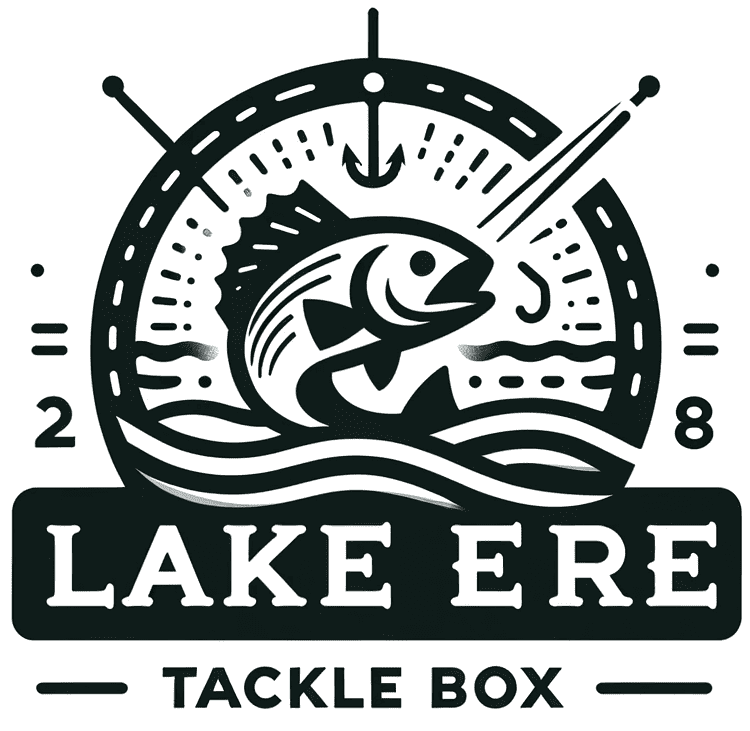
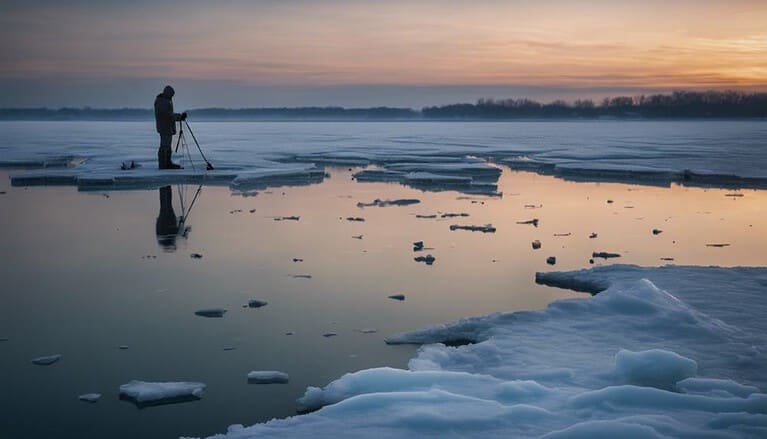

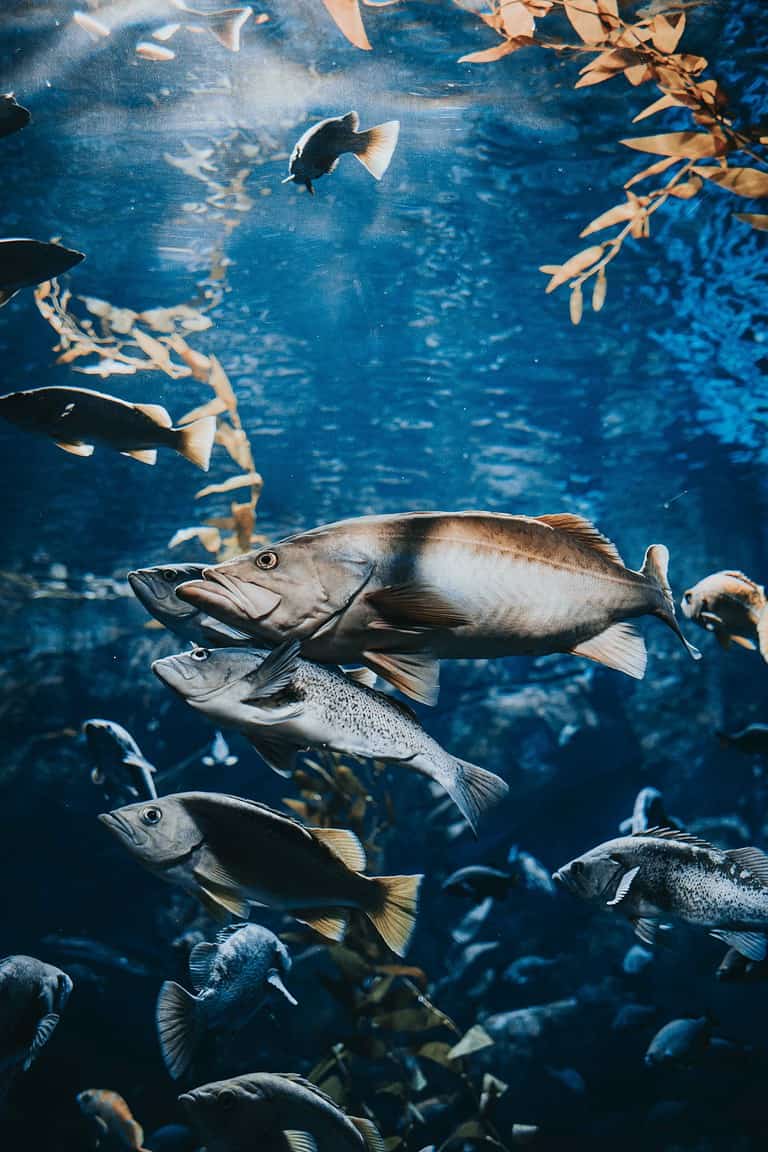
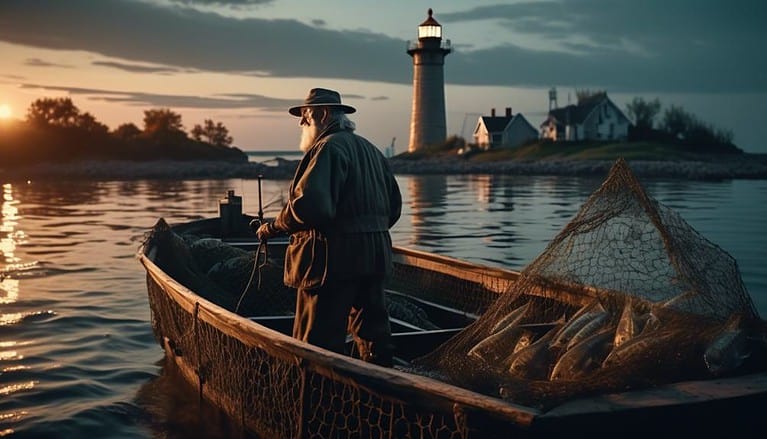
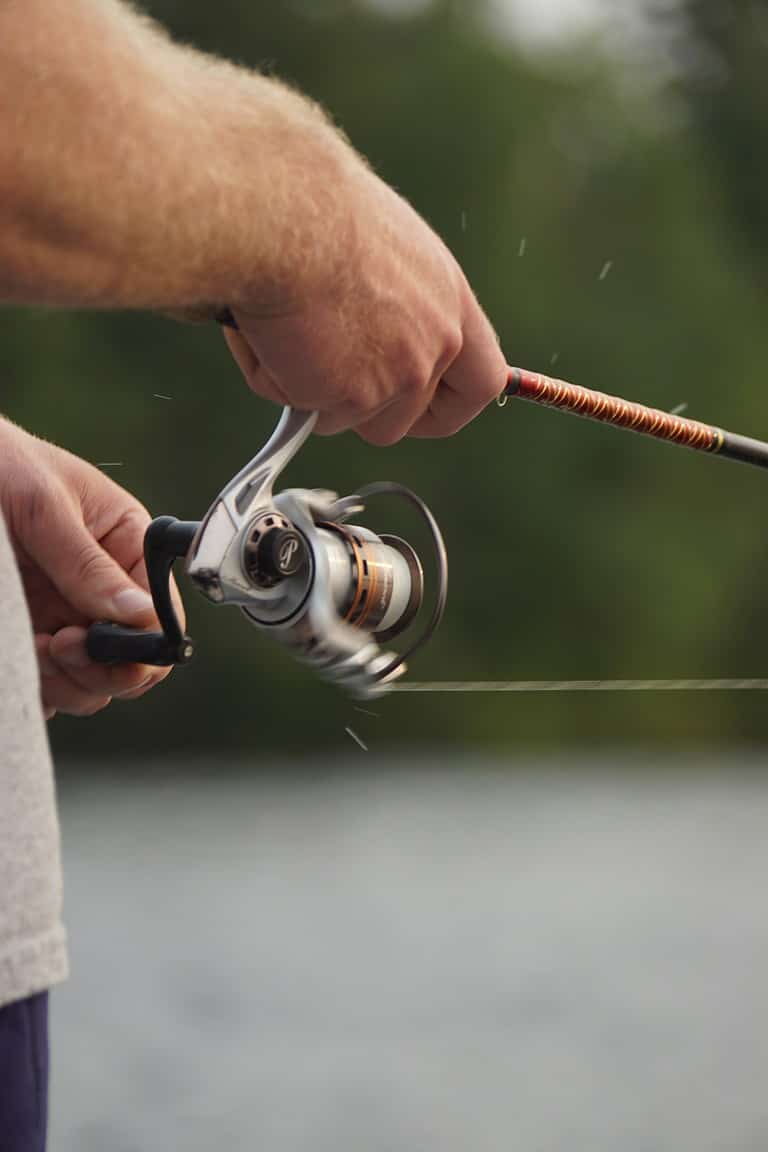
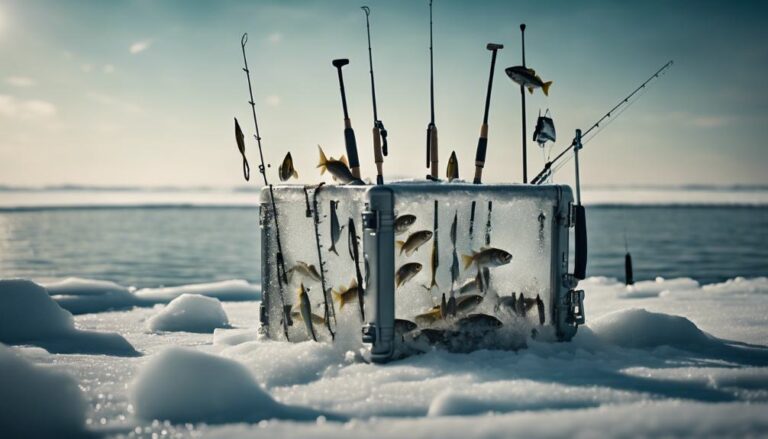
One Comment
Comments are closed.